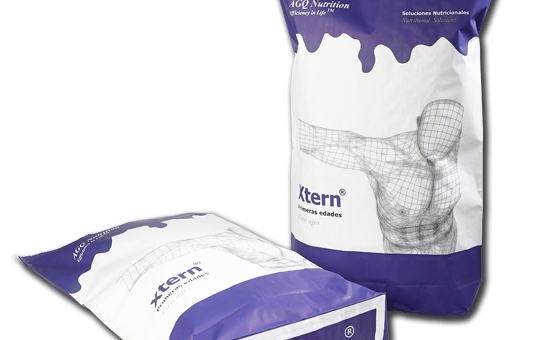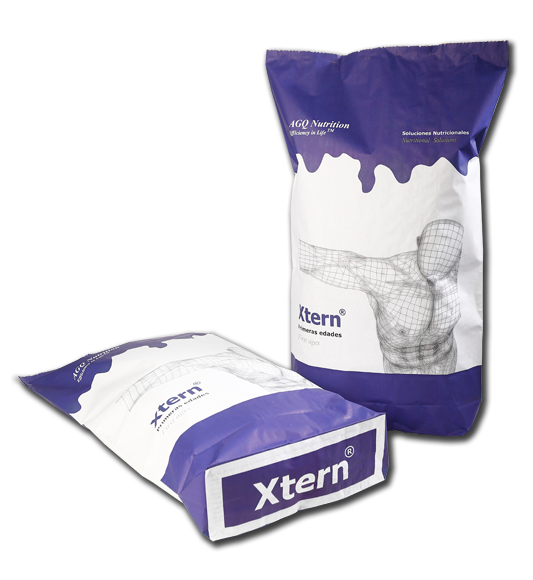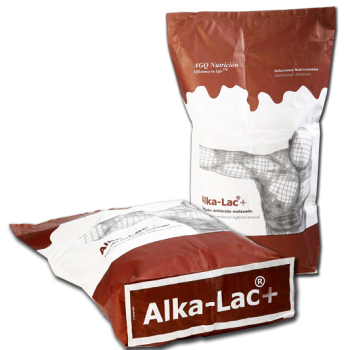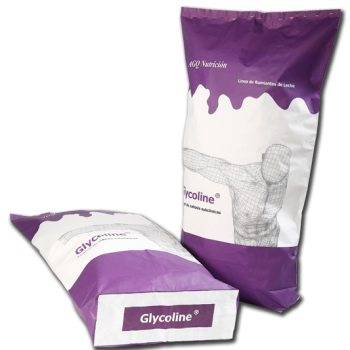
Xtern®
Xtern®
Early weaning at Full potential
Unlock the unparalleled potential of early life nutrition for young calves with XTERN®. A meticulously formulated blend of ingredients and feed additives, XTERN®is more than just a feed – it’s the cornerstone of healthy growth and development for young ruminants.
Tailored specifically for those crucial weeks before and after weaning, this innovative product not only addresses dietary needs but sets the stage for lifelong vitality and productivity.
Specifications

Benefits of Xtern
Cost Effective Early Weaning
Eliminate the heavy reliance on expensive milk replacers that delay early weaning. Xtern’s unique composition encourages young calves to initiate solid feed consumption early on. With its appealing milky sweet taste and captivating odor, calves are naturally drawn to it, easing the weaning process.
Enhanced Health and Digestion
Xtern’s powerful ingredients shield calves against harmful pathogens and reinforce the gastrointestinal tract. This dual-action formula prevents post-weaning slumps, mechanical and pathogen associated diarrheas, ensuring optimal growth without setbacks.
Rumen Maturation & Metabolic Transition
Rumen maturation needs a complete 180º change at the biochemical level of the young ruminant. The animal needs to shift from a metabolism based on glucose consumption and burn to a rumen driven metabolism where SCFA (Short Chain Fatty Acids) are the key sources of energy. Supporting crucial transition results in lasting epigenetic changes, significantly boosting survivability and lifelong milk production potential.
Benefit
- Captivating odor that draws calves to the feed
- Reduces dependency on costly milk replacers.
- Encourages solid feed consumption right from the early stages.
- Naturally enticing milky sweet taste.
Benefit
- Prevents common post-wean digestive issues.
- Optimizes growth without the risk of setbacks.
- Fortified against harmful pathogens ensuring a strong GI tract.
- Boosts overall calf health and resilience.
Benefit
- Supports rapid rumen development.
- Facilitates the shift from glucose to SCFA metabolism.
- Induces beneficial, lifelong epigenetic changes.
- Maximizes survivability and milk production potential.
Key Scientific Excerpts
"In Greek dairy herds, the prevalence of SARA was found to be 16% in cows with rumen pH ≤5.5. Factors like feeding regime, particle length size, ration composition, and housing type significantly influenced the presence of SARA"
SARA prevalence in Greece,
Kitkas, Valergakis, Karatzias & Panousis, 2013"Subacute ruminal acidosis (SARA) in dairy cattle is linked with reduced efficiency of milk production, impaired cow health, and high rates of involuntary culling. It may be associated with liver and lung abscesses, laminitis, and reduced ruminal efficiency"
Subacute ruminal acidosis health effects,
Hussain, Amjad-ul-Islam & Gupta, 2011"The prevalence of subacute ruminal acidosis in European dairy herds is around 20%, generating annual losses in the United States of approximately USD 500 million to 1 billion"
SARA Prevalence Europe,
Kovács et al., 2020"Subacute ruminal acidosis (SARA) prevalence in grazing Irish dairy cattle fed predominantly perennial rye grass-based pasture was found to be 11%, with 42% marginal and 47% normal. This raises concerns regarding effective pasture utilization and potential consequences for animal health"
SARA Prevalence,
O’Grady, Doherty & Mulligan, 2008"Subacute ruminal acidosis (SARA) is a common condition in well-managed dairy cattle herds due to high grain and low fibre diets, leading to ruminal fermentation disorders and negatively impacting production performance and farm economy."
Economic Impact of SARA,
Mathew & Ajithkumar, 2014"Ketosis reaches a prevalence of 20% during early postpartum, with economic losses estimated up to €250 per case/year, doubling if associated diseases are considered"
Ketosis prevalence,
(Lei & Simões, 2021)"The overall prevalence of subclinical ketosis in European dairy farms was 21.8%, with cows having 1.5, 9.5, and 5.0 times greater odds of developing metritis, clinical ketosis, and displaced abomasum, respectively"
Prevalence of Subclinical Ketosis,
(Suthar et al., 2013)"Analysis of over 1 million test day records showed the highest decrease in daily milk yield due to subclinical ketosis was 4.21 kg/day in first-parity cows and 3.72 kg/day in cows with more than four lactations" (Gantner et al., 2016).
NEB effect on Milk Yield,
"In Western European dairy herds, the prevalence of ketosis was 39%, with significant variation among countries. Management systems and fresh cow clinical conditions were identified as associated factors" (Berge & Vertenten, 2014).
Prevalence of Ketosis in Europe,
The overall prevalence of subclinical ketosis (SCK) in European dairy farms was 21.8%, with cows having 1.5, 9.5, and 5.0 times greater odds of developing metritis, clinical ketosis, and displaced abomasum, respectively. (Suthar et al., 2013).
Prevalence in Ketosis,
"Sub-acute ruminal acidosis (SARA) is a significant metabolic disease affecting high-producing dairy cows. SARA leads to reduced milk fat and protein production, increased veterinary costs, and a higher risk of culling."
SubAcute Rumen Acidosis Effects,
Khafipour et al., 2009With regard to fertility to AI, there is a strong positive association between early commencement of postpartum ovulatory cycles and subsequent pregnancy, ensures a good start to lactation, increasing feed efficiency and milk production, particularly during heat stress
NEB on Reproduction of Dairy Cows,
(Butler, 2000; Galvao et al., 2010)With regard to fertility to AI, there is a strong positive association between early commencement of postpartum ovulatory cycles and subsequent pregnancy (Butler, 2000; Galvao et al., 2010). This important relationship has focused research attention on the regulation and re-initiation of ovarian activity and ovulatory cycles in early lactation prior to the breeding period. Energy balance, re-initiation of ovarian activity, and metabolic health status are inter-connected in transition cows.


